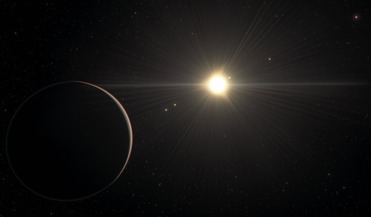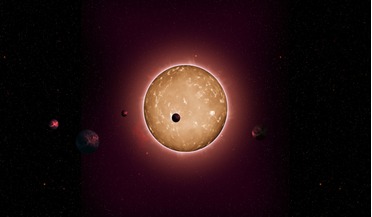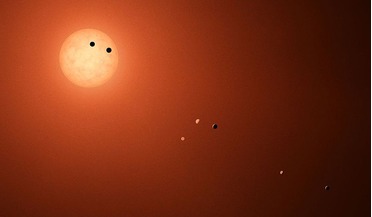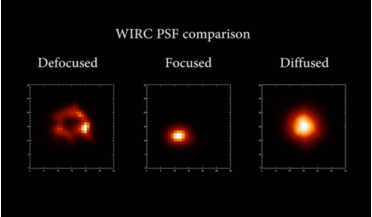 25 January 2021
Unique six-exoplanet system challenges theories of how planets form
25 January 2021
Unique six-exoplanet system challenges theories of how planets form
... ESO’s Extremely Large Telescope (ELT) begins operating later this decade it will be able to directly image rocky exoplanets in a star’s habitable zone and even characterise their atmospheres; a feature that will help scientists to understand systems...
 24 November 2021
Astronomers discover more than 350 possible new exoplanets
24 November 2021
Astronomers discover more than 350 possible new exoplanets
...is still being examined for signs of potential habitable exoplanets. However, because of the problems Kepler experienced, ... have with the K2 data, meaning that each individual exoplanet of interest has required some amount of visual assessment....
 11 December 2019
Water abundance lower than expected on exoplanets
11 December 2019
Water abundance lower than expected on exoplanets
... later accretion stage. The abundances of other elements have been predicted to be similarly high in the atmospheres of giant exoplanets too - especially oxygen, which is the most abundant element in the universe after hydrogen and helium. This...
 11 March 2020
Ultra-hot exoplanet literally rains iron say astronomers
11 March 2020
Ultra-hot exoplanet literally rains iron say astronomers
... it is these swollen star properties I.e high temperature and large radii, that give rise to these hot, bloated exoplanets. Another curious condition of these type of planets is that the dayside, which is predicted to be cloud-free and substantially...
 19 May 2017
Exoplanets galore and possibly the next Trappist-1 system?
19 May 2017
Exoplanets galore and possibly the next Trappist-1 system?
... is also weak evidence for the existence of signals at periods of 11 and 43 days. If these signals are confirmed to be additional exoplanets at a later date, such a set-up could rival the recently announced Trappist-1 system, which has seven planets...
 09 October 2017
New telescope attachment helps find exoplanets
09 October 2017
New telescope attachment helps find exoplanets
...allow astronomers with ground-based telescopes to observe exoplanets with a similar resolution usually reserved for space... such, diffusers can be used for a wide range of exoplanet science. We can use them to precisely measure the times exoplanetary...